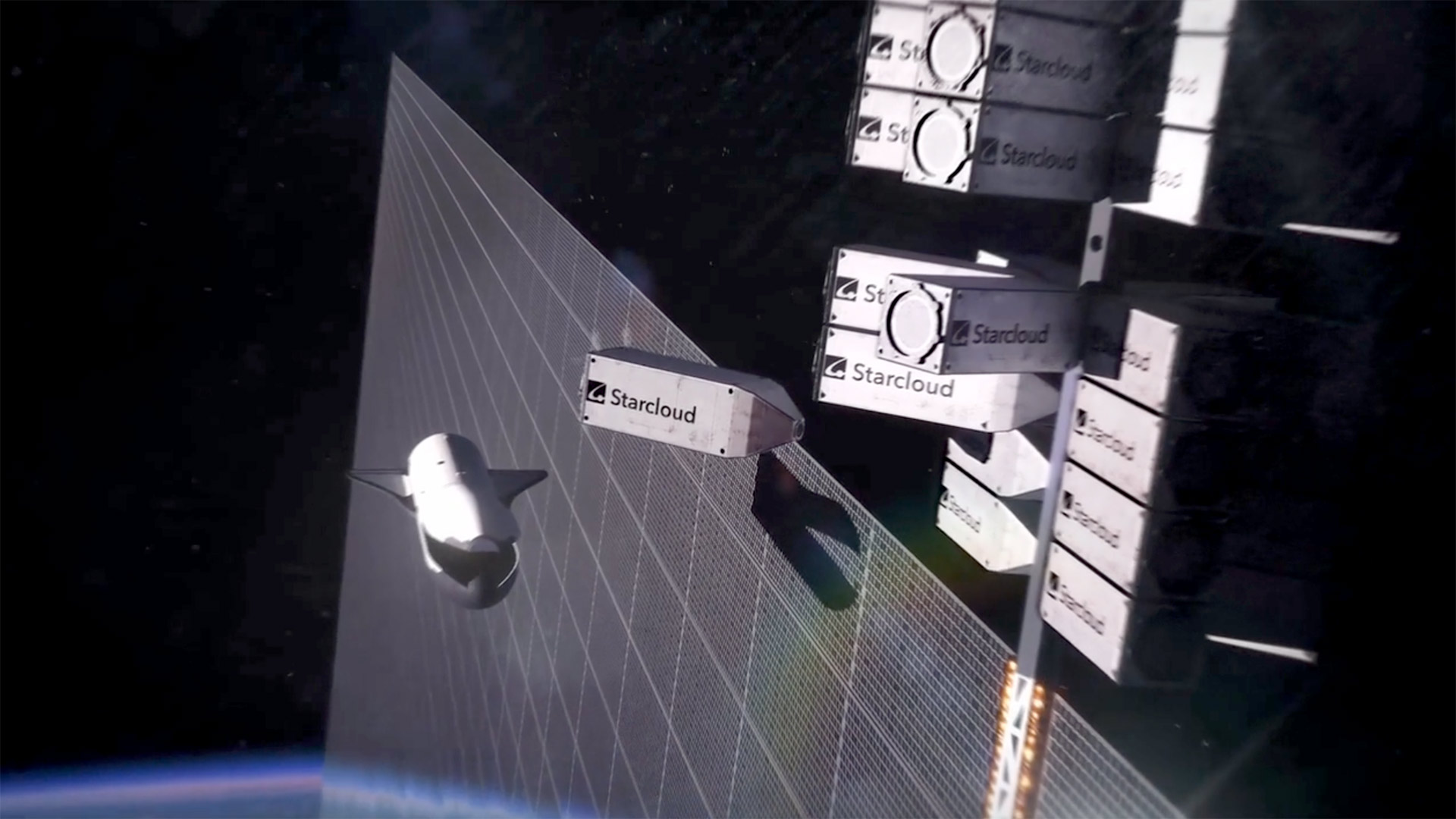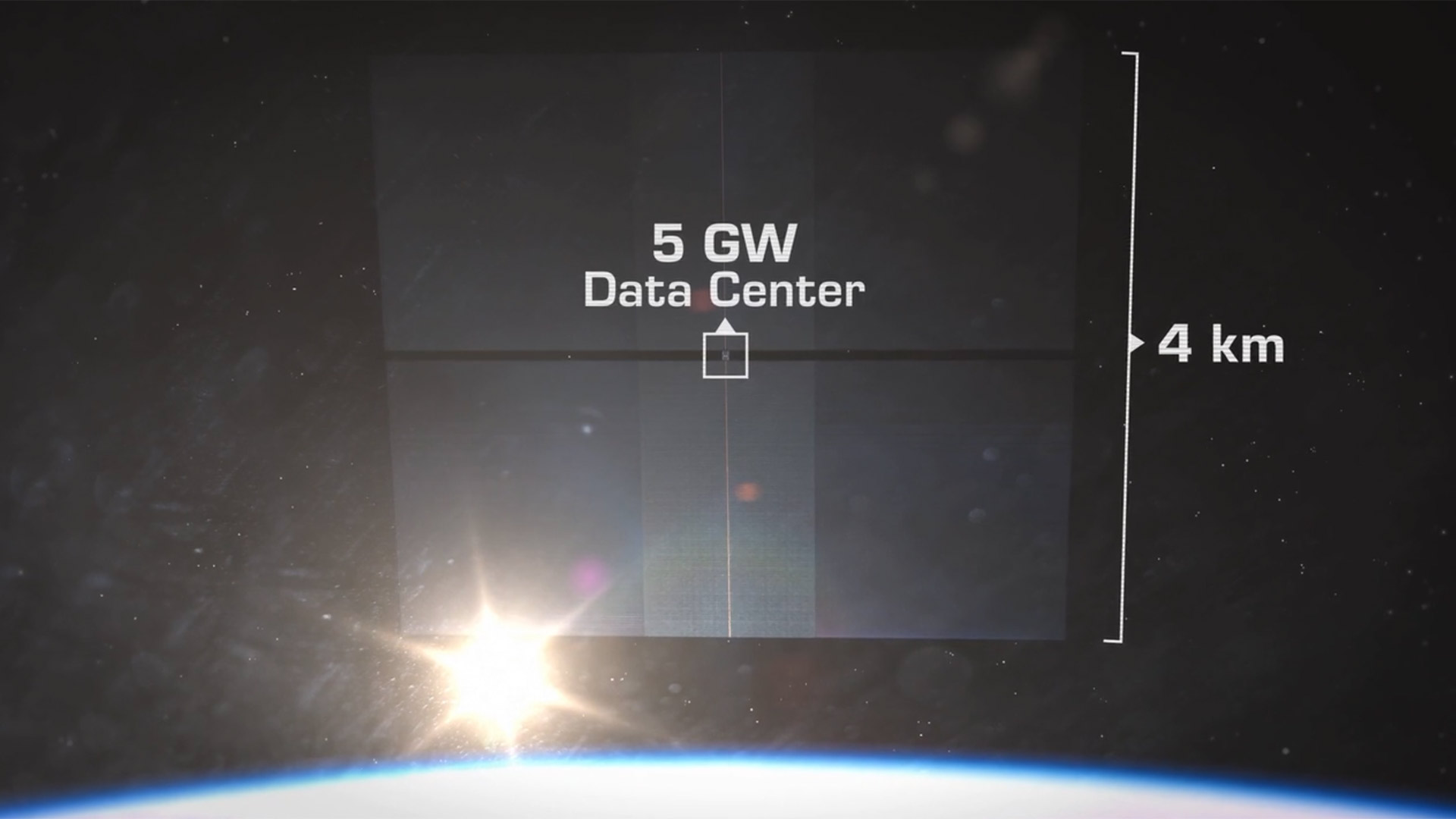Nvidia's H100 GPUs are going to space — Crusoe and Starcloud pioneer space-based solar-powered AI compute cloud data centers
Space age partners claim the H100 delivers ‘100x more powerful GPU (AI) compute than has been in space before.’

The first Nvidia H100 GPUs are heading into space next month. This out-of-this-world news comes as AI factory company, Crusoe, reveals its plans to become “the first public cloud operator to run workloads in outer space.” The orbital Crusoe Cloud deployment will be powered by Nvidia H100 GPUs and AI accelerators in strategic partner Starcloud’s AI data center satellites.
Why have AI data centers in space?
Crusoe and Starcloud share an energy-first vision of an AI data center infrastructure that leverages solar power in space. The rays of energy-rich light emitted by the sun are unencumbered by the Earth’s atmosphere in the Starcloud’s orbit. Thus, companies that establish these kinds of resources in space can enjoy “almost unlimited, low-cost renewable energy.”
Estimates suggest space-based solar-powered data centers will benefit from 10x lower energy costs (including launch cost) vs those on Earth.
As you can see in our embedded image, space allows for massive solar panel arrays, with no concerns about land use. Moreover, operating such systems puts no strain on the Earth’s energy grid. However, we would be interested to learn more about GPU cooling in space-based data centers, given that there is no air for the Earth-like traditional convection of heat, but also very little heat. Nvidia claims Starcloud will use the vacuum of deep space as "an infinite heat sink."
Crusoe and Starcloud
Crusoe has a long history of co-locating its compute infrastructure near novel energy sources. Thus, GPUs in space are just a logical step for the company, albeit quite a large one. Cully Cavness, co-founder, president and COO of Crusoe, sai,d "By partnering with Starcloud, we will extend our energy-first approach from Earth to the next frontier: outer space."
Starcloud is a Redmond-based Nvidia Inception program backed company. It is focused on building data centers in space, scalable to gigawatt capacities, making it a natural fit for Crusoe’s ambitions.
“Having Crusoe as the foundational cloud provider on our platform is a perfect alignment of vision and execution,” said Philip Johnston, CEO of Starcloud. “Crusoe's expertise in building rugged, efficient, and scalable computing solutions makes them the ideal partner to pioneer this new era.” Johnston also underlined the possibilities of unlocking cloud computing power in space for research, discovery, and innovation.
Get Tom's Hardware's best news and in-depth reviews, straight to your inbox.
The partners seem to have even more ambitious plans, going forward, with regard to scaling. However, at this stage, it is rather premature to talk of plans more astronomical than those already sketched out from now until early 2027.
Space data center timescales
Starcloud will be the first to launch Nvidia H100s into space in November 2025. Crusoe will deploy its Crusoe Cloud service on a Starcloud satellite scheduled to launch in late 2026. Subsequently, Crusoe plans to offer limited GPU capacity from space by early 2027, thus “pioneering a new paradigm for AI factories.”

Follow Tom's Hardware on Google News, or add us as a preferred source, to get our latest news, analysis, & reviews in your feeds.

Mark Tyson is a news editor at Tom's Hardware. He enjoys covering the full breadth of PC tech; from business and semiconductor design to products approaching the edge of reason.
-
bit_user Reply
I find this hard to believe, but I guess they wouldn't do it if the math didn't work out.The article said:Estimates suggest space-based solar-powered data centers will benefit from 10x lower energy costs (including launch cost) vs those on Earth.
The other thing about this that stretches credulity is that the 4x4 km array of solar panels won't quickly get trashed by obital debris and space weathering. A satellite so big won't be nimble at dodging pending collisions, either.
IMO, a better prospect for a scalable power source is probably to get terrestrial nuclear fusion reactors working. -
User of Computers Reply
I'm ngl with all the idiocy around the AI bubble right now, the "does this actually make sense" question is the last one these startups and companies think to ask themselves before they push the green button.bit_user said:they wouldn't do it if the math didn't work out.. -
Vanderlindemedia ReplyJamesJones44 said:That's one way to deal with keeping them cool during operation :D
Pretty much unlimited heat output in Space.
But chips like this have to be "radiation proof" as space grade hardware is completely different then zero tech of today. It likely would not even work or survive up there without causing huge amount of errors. -
Thunder64 ReplyVanderlindemedia said:Pretty much unlimited heat output in Space.
But chips like this have to be "radiation proof" as space grade hardware is completely different then zero tech of today. It likely would not even work or survive up there without causing huge amount of errors.
And what is going to remove that heat? -
bit_user ReplyJamesJones44 said:That's one way to deal with keeping them cool during operation :D
I wonder about this, because they need to radiate that heat and I have no intuition for the relative size/weight of the heatsink needed. Obviously, the bigger the heatsink, the heavier/bulkier and more expensive it'll be to send into orbit.Vanderlindemedia said:Pretty much unlimited heat output in Space.
Funny story: early satellites had a massive problem with heat buildup. They'd get launched into orbit and seem okay, only to stop working shortly thereafter. After a few times of this happening, engineers figured out that too much heat was being trapped inside the satellites and they were literally frying themselves.
Also, my first thought. I've read about satellites using more advanced ECC schemes. I wonder if it's possible to add enough shielding? Or do they just not care so much about errors, because AI is "noisy" enough, anyway?Vanderlindemedia said:But chips like this have to be "radiation proof" as space grade hardware is completely different then zero tech of today. It likely would not even work or survive up there without causing huge amount of errors.
One interesting data point is the Ingenuity helicopter that NASA flew on Mars. It used an off-the-shelf Snapdragon SoC, like those used in phones from 10 years ago. Not made on a radiation-hardened manufacturing node, and yet it worked for more than 6 months, until the rotors got some physical damage. Mars has virtual no atmosphere (like 1% of Earth's) and almost no magnetic field, so radiation levels are probably not much different than space.
I found it surprising they used that SoC and that it seemed to work okay! However, I do recognize that putting one little SoC on Mars is a different proposition than parking an orbital datacenter in a Lagrange point, where it gets 24/7 sunlight. -
bit_user Speaking of Earth-Sun Lagrange points, how are they going to decommission this thing? It could end up being quite a lot of dense mass for burning up in the Earth's atmosphere, and getting it there would require a lot of fuel, right at the end of its life. Is it feasible to put it in a trajectory that (eventually) sends it into the sun?Reply
